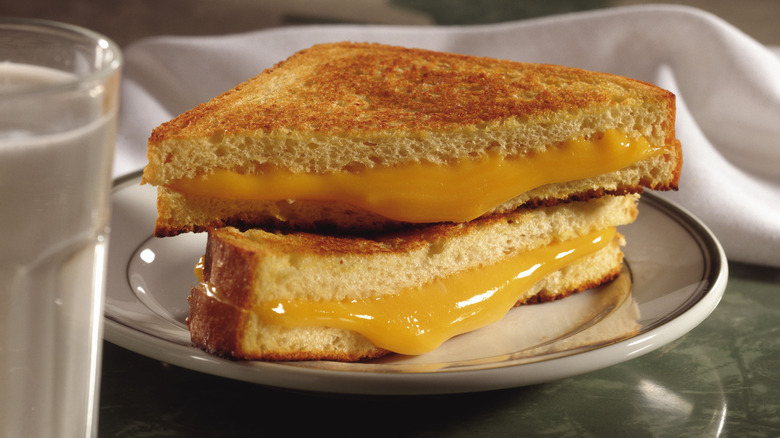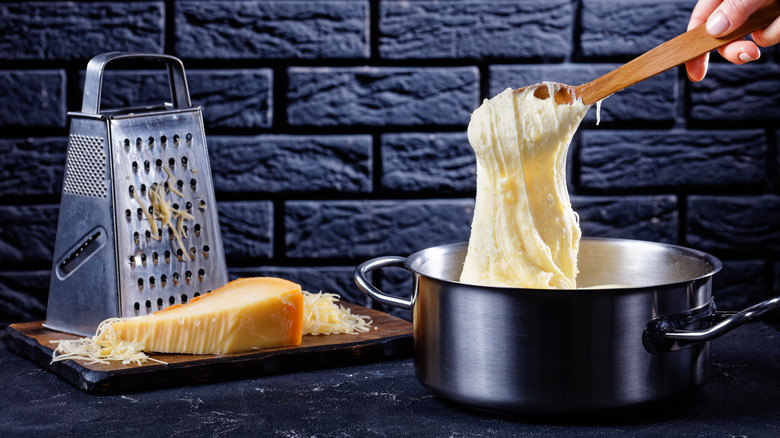The Secret Salty Ingredient That Creates The Perfect Cheese Pull
We may receive a commission on purchases made from links.
There's only one thing that can elevate the experience of eating cheese, and that's the perfect cheese pull. It might taste great, but if it doesn't stretch and melt, well, you're really missing out. How well a cheese pulls is really a result of the type of cheese you use; the higher the moisture or fat content, the better the cheese pulls you can produce. That's why varieties like mozzarella and cheddar are often used in dishes like mac and cheese, grilled cheese, and mozzarella sticks.
If you've ever tried to use dry aged cheese in one of these recipes, it would be almost impossible to produce a cheese pull — unless, of course, you added sodium citrate. On its own, dry-aged cheese doesn't really melt. Instead, the emulsion of fat, water, and protein breaks down and separates. Introduce sodium citrate, and it's a different story. The sodium citrate allows the proteins to separate instead of clumping up, ultimately keeping the emulsion intact and allowing it to properly melt and produce a cheese pull.
What is sodium citrate?
The thought of adding a chemical additive to your food might be the last thing you want to do, even for the sake of the perfect cheese pull, but there's a good chance you've already consumed sodium citrate before without realizing it. Sodium citrate is a fairly common preservative that The Chemical Company says can be found in all types of food products, including ice cream, bratwurst, and club soda. It's also one of the main ingredients in American cheese.
American cheese, like many other varieties, is made up of dairy, water, and salt, in addition to sodium citrate. The preservative was initially added to cheese all the way back in 1911 because producers wanted to create cheese with a longer shelf life. Sodium citrate certainly achieved this, but its addition had other noticeable effects, creating cheese with a softer, smoother texture too. A 2006 study by the American Dairy Science Association found that sodium citrate had an effect on cheese consistency, confirming what cheesemakers had known for nearly a century. But this effect isn't just limited to American cheese, however, sodium citrate can improve the cheese pull of any other type of cheese.
The best way to add sodium citrate to cheese
To add sodium citrate to cheese, you don't have to make cheese from scratch, but you do have to grate it and melt it down. Start by using any cheese of your choosing, whether that be a very aged parmesan or an already decently melty gouda. After grating it, boil a pot of water and add sodium citrate, which can easily be found in specialty stores and online from places like Amazon. Once the sodium citrate has dissolved in the water, combine it with the grated cheese. Upon stirring them together, a melted cheese mixture should form.
Try a ratio of one teaspoon of sodium citrate to one cup of water to start, but you can always experiment with less water if you prefer a thicker cheese. One positive of making your own cheese this way is that you don't have to worry as much about it turning hard too quickly. Cheese combined with sodium citrate stays melty for longer and won't firm up even if it sits out for several hours, meaning you can have a cheese pull for every single bite.


